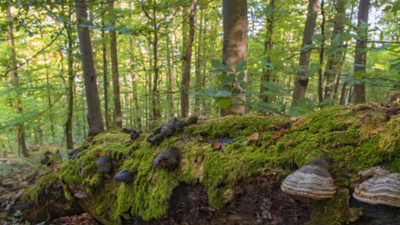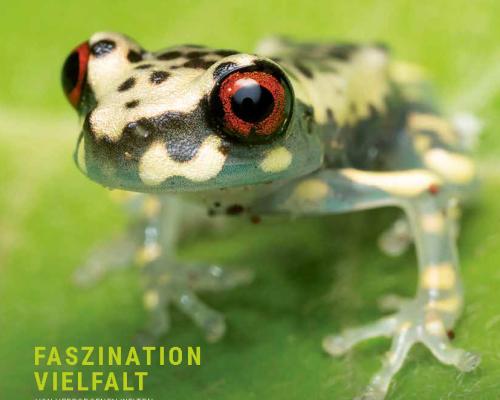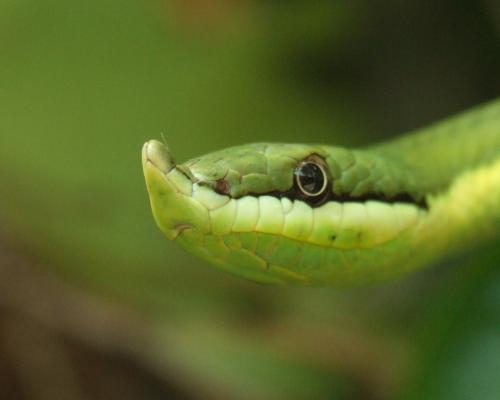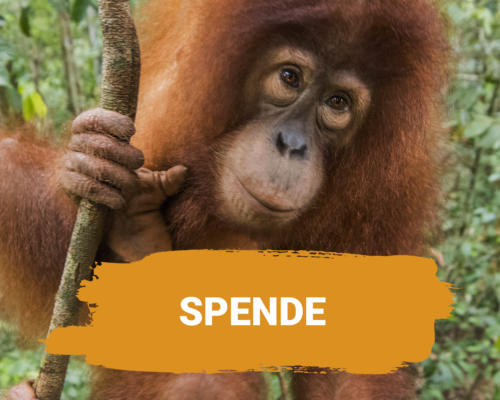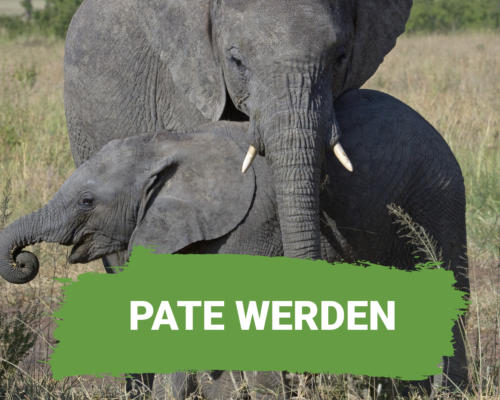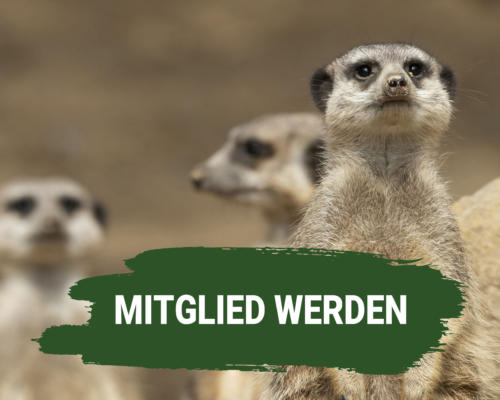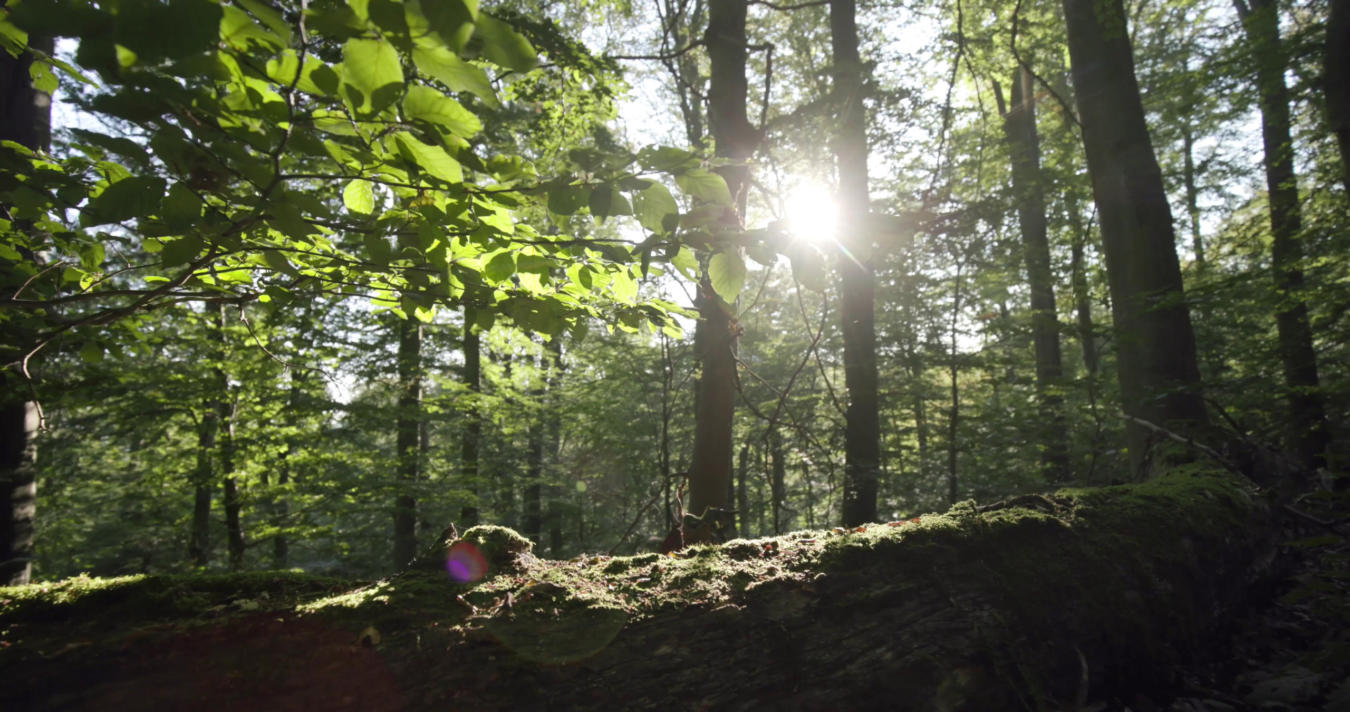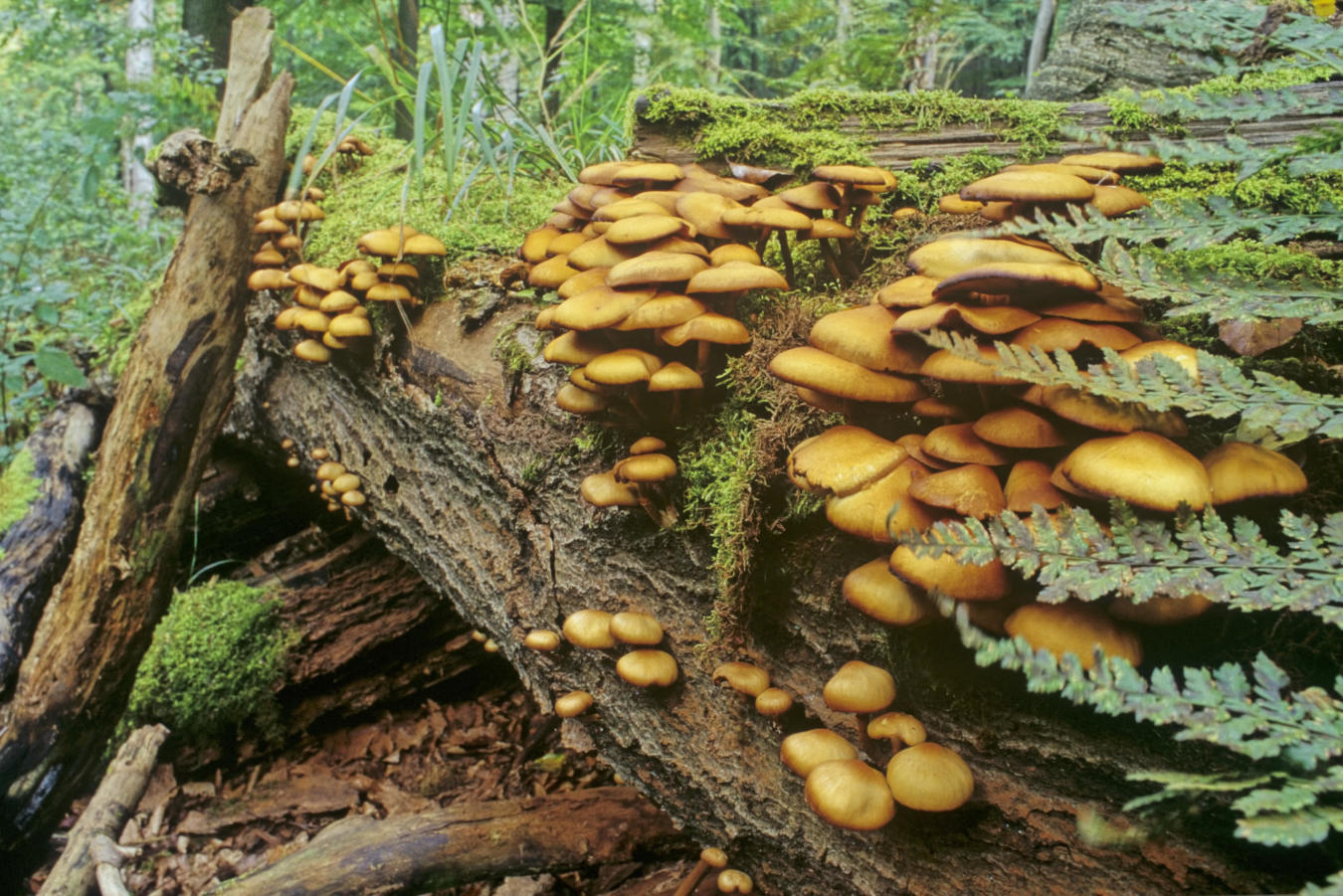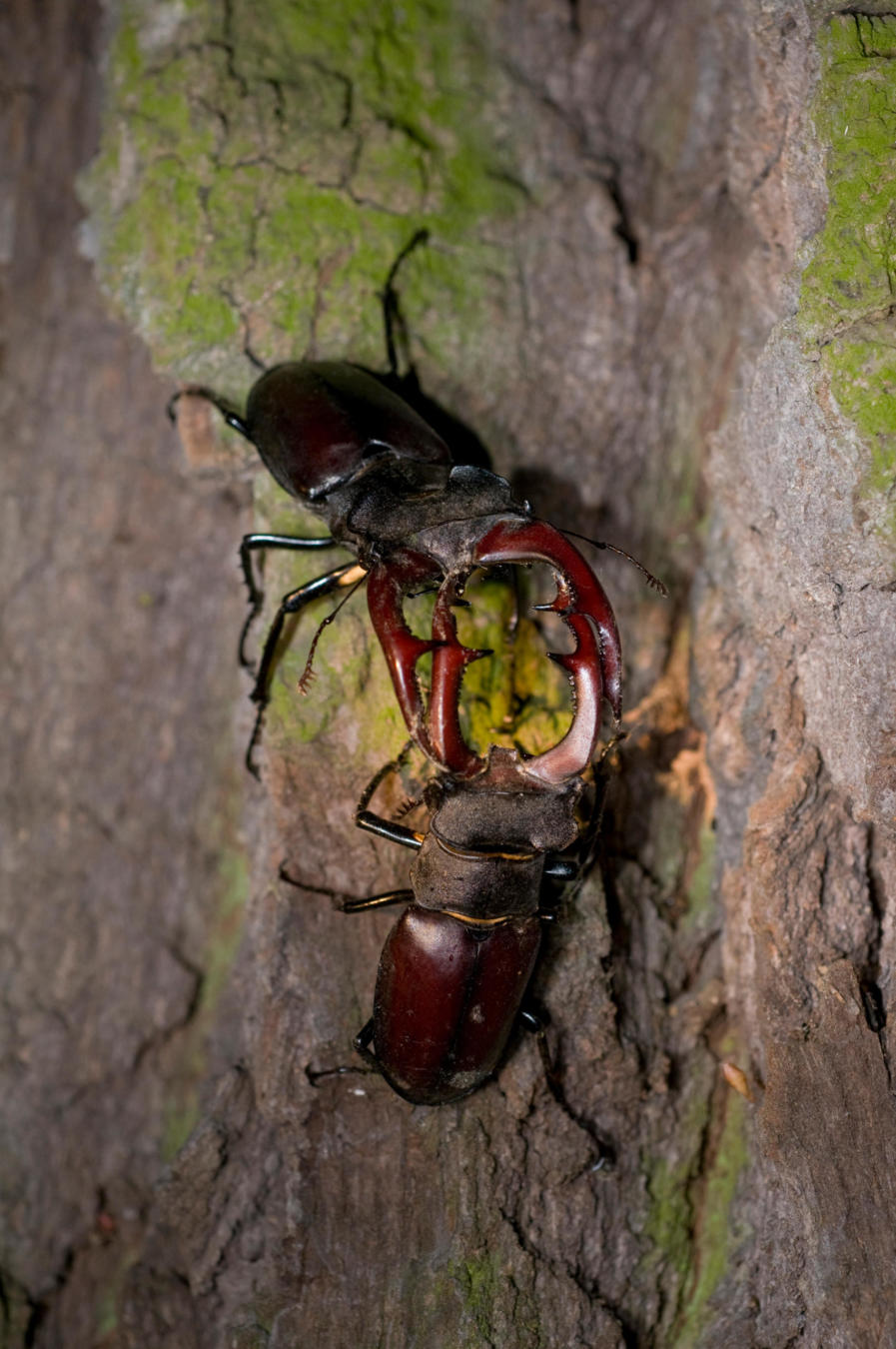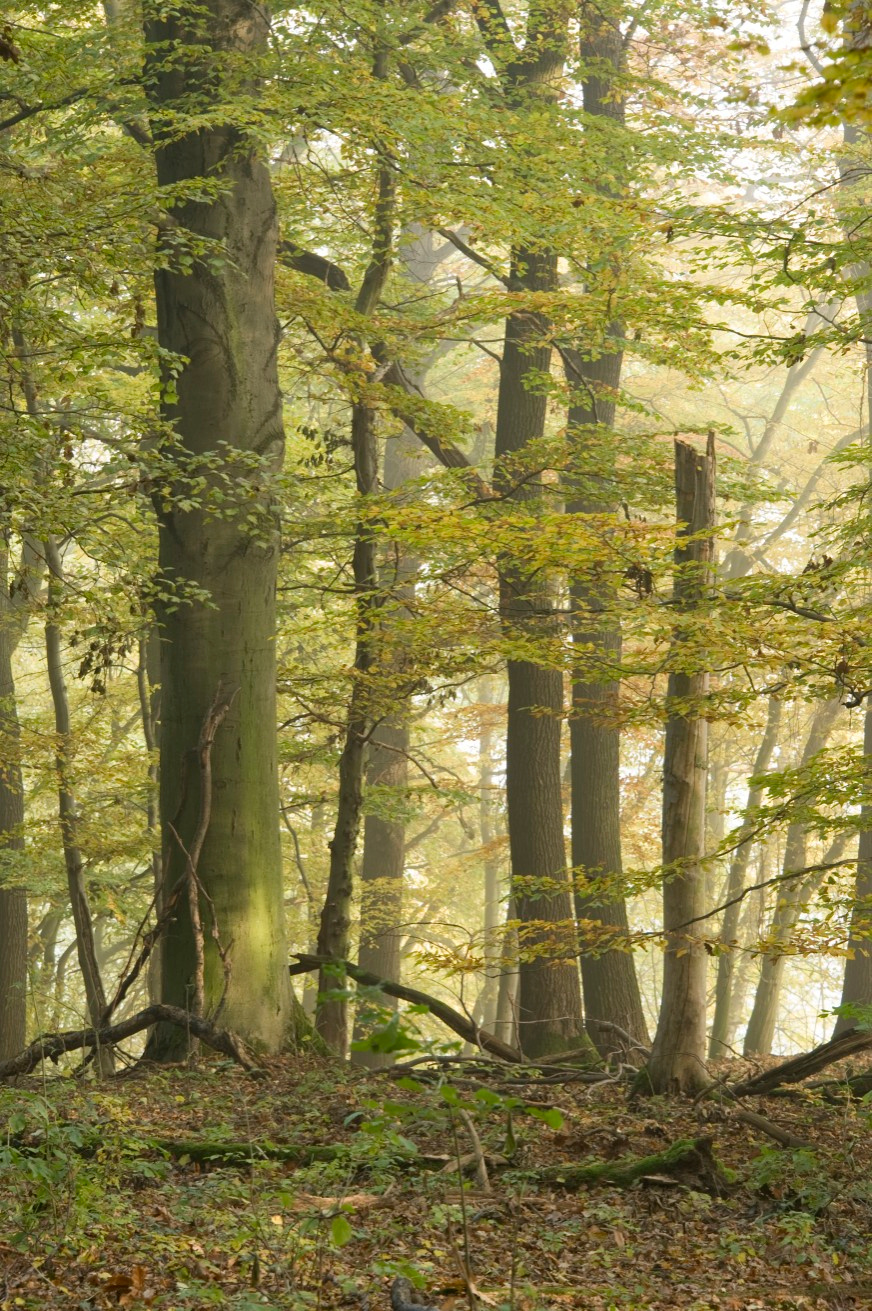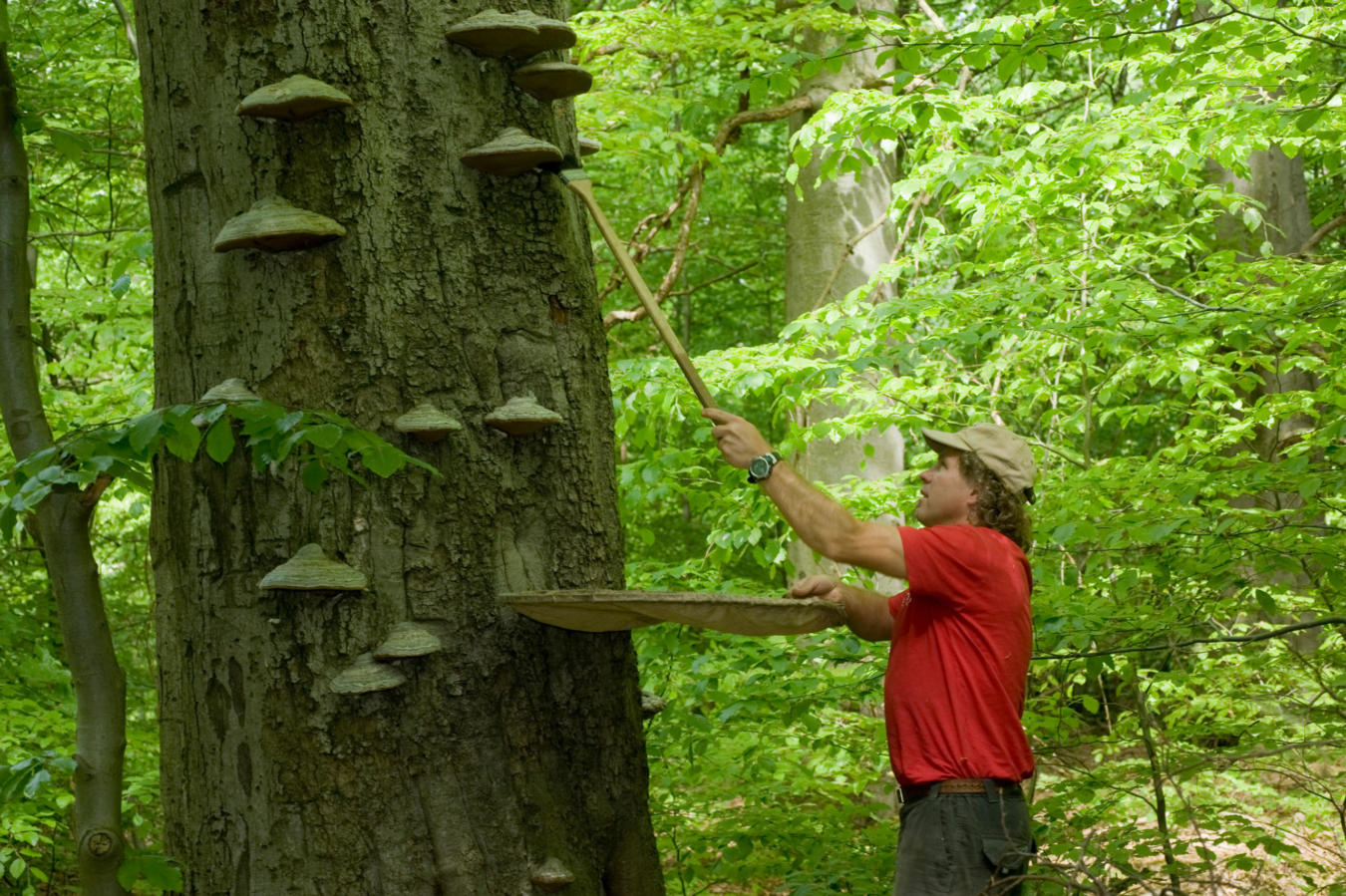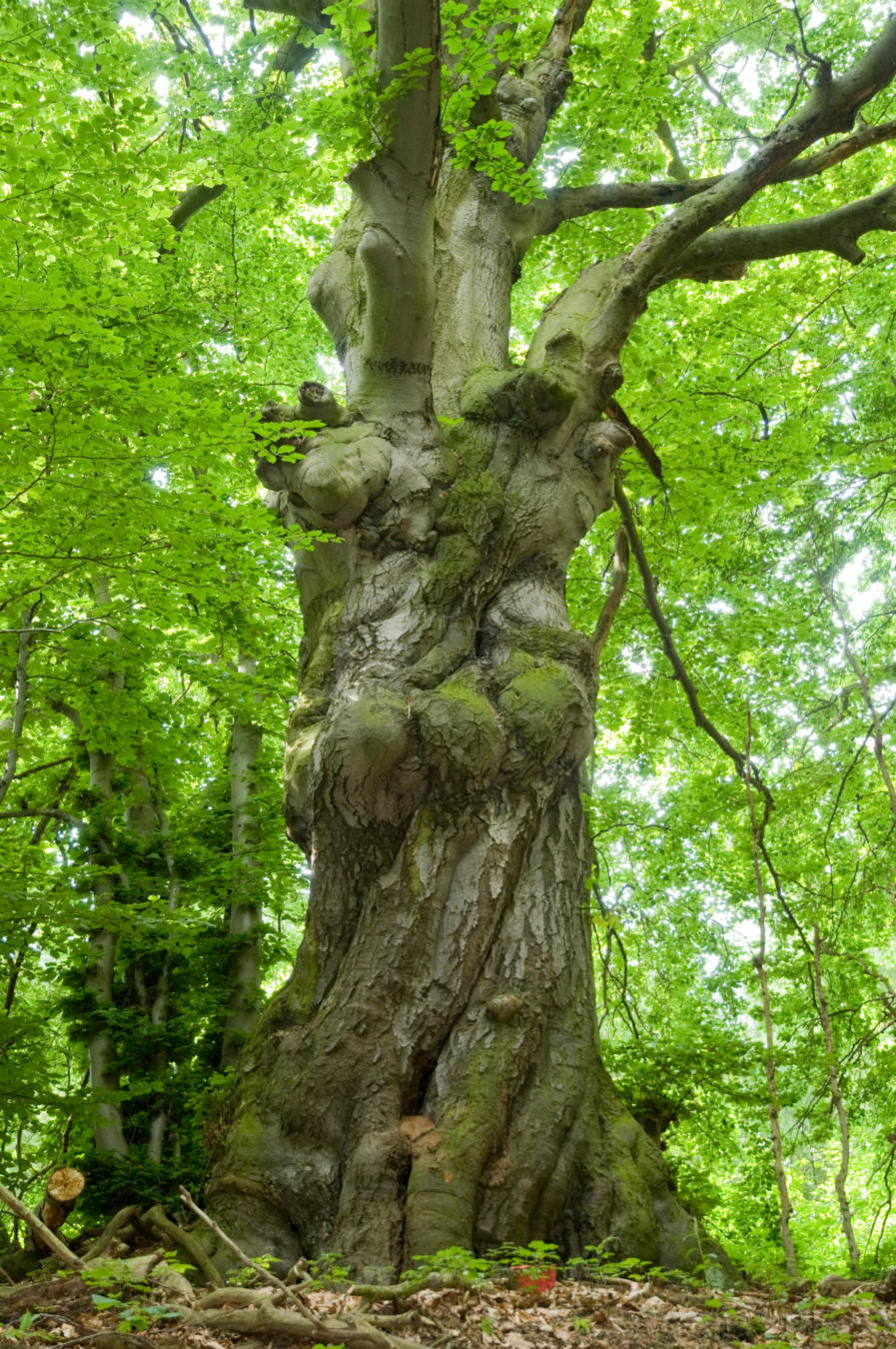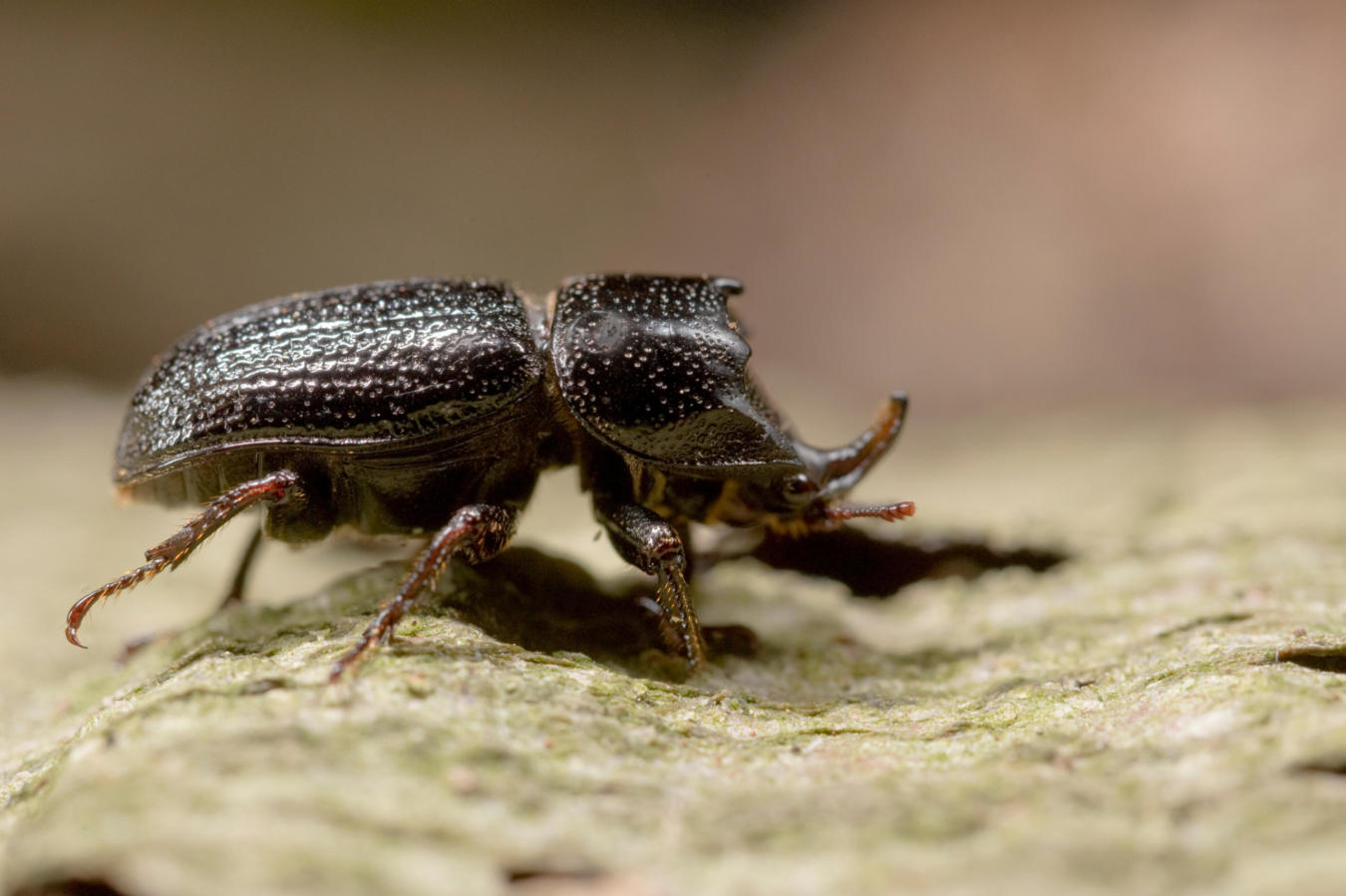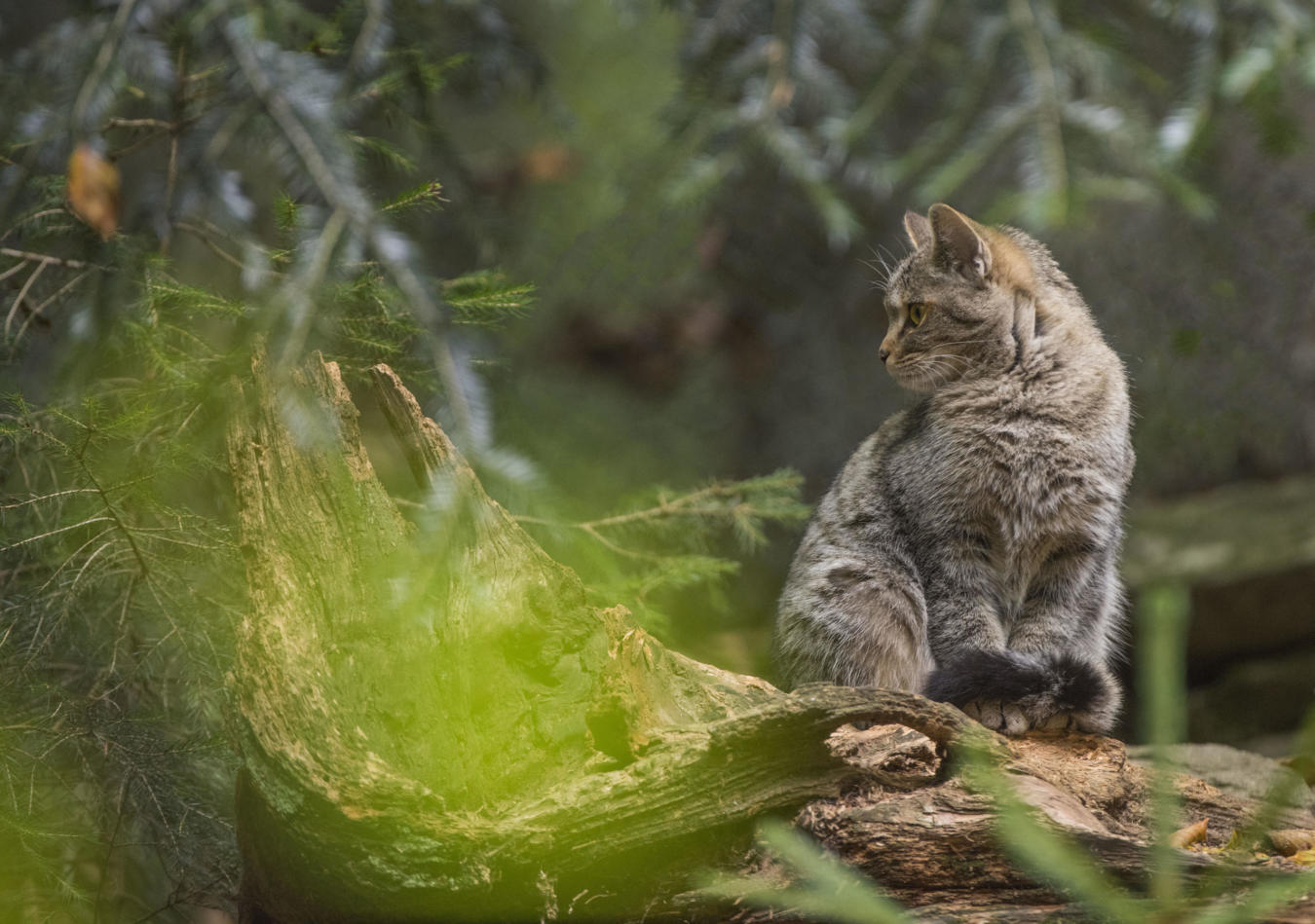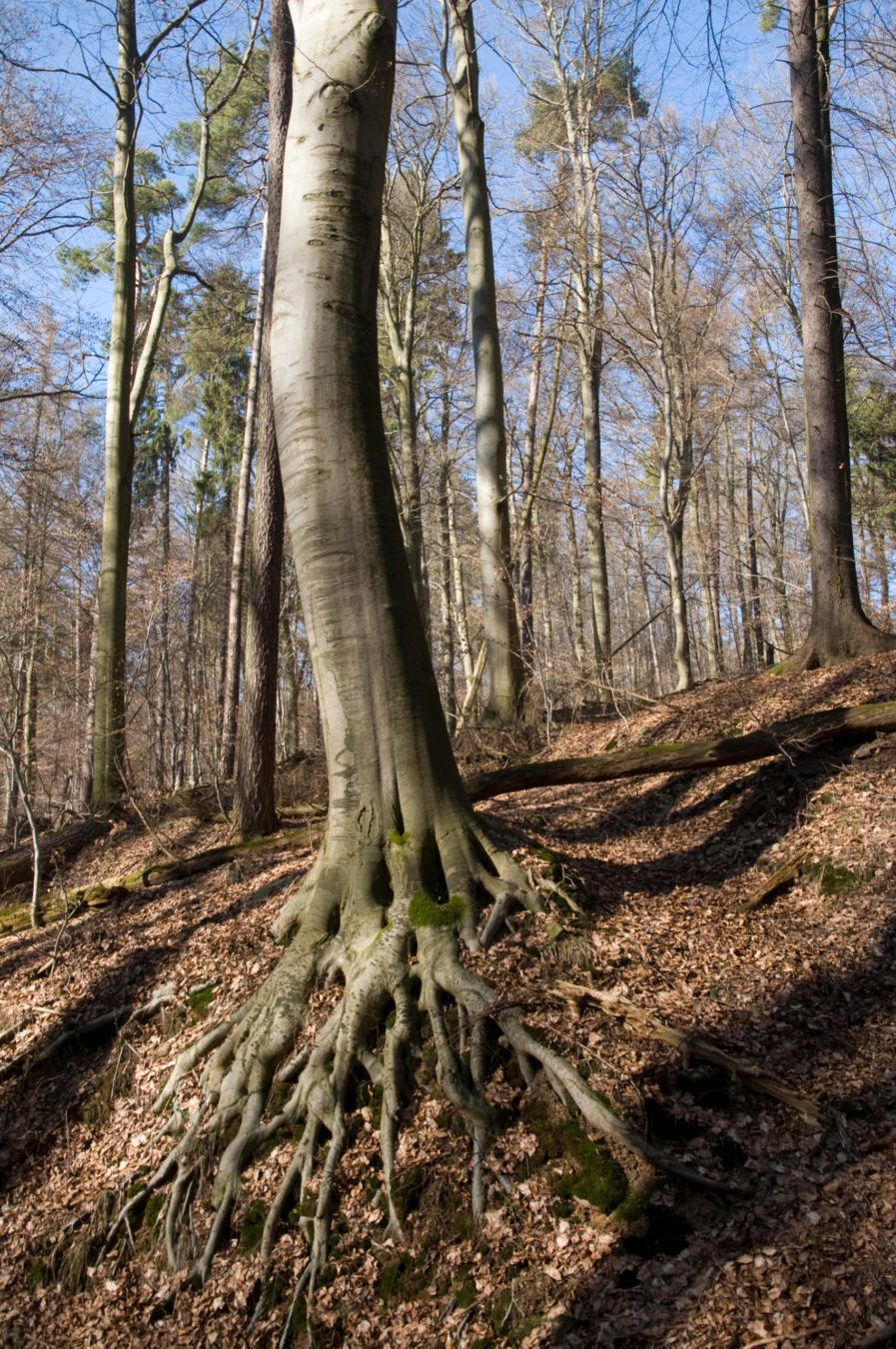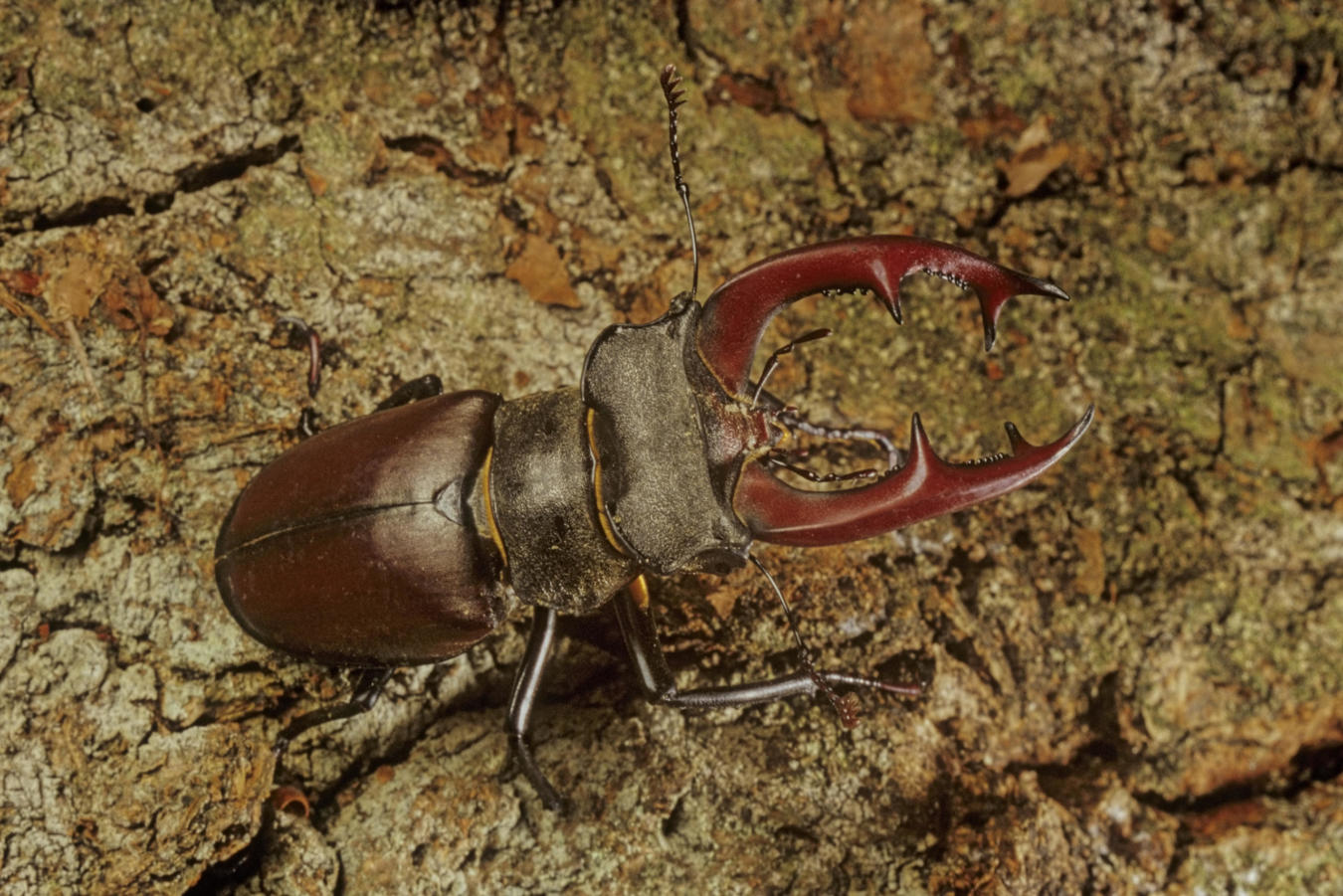Erweiterung der Wildnisflächen Wiegental um 30 Hektar.
In der Hohen Schrecke in Nordthüringen birgt ein fast vergessener Wald wertvolle Naturschätze: alte Baumriesen, Wildkatzen, Fledermäuse und Käfer, die es sonst nur noch in Urwäldern gibt (sogenannte Urwald-Reliktarten). Wir unterstützen die Naturstiftung David seit 2009 dabei, diese einzigartigen naturnahen Waldbestände zu bewahren.
Übergreifendes Ziel ist eine enge Verzahnung zwischen großflächig ungenutzten und besonders naturnah genutzten Wäldern. Es gibt zwei große Wildnisbereiche: das besonders wertvolle Wiegental mit seinen uralten Buchen und Eichen und am ehemaligen Schießplatz das sogenannte Plateau.
Beide Wildnisbereiche sollen durch kleinere Trittsteine aus nutzungsfreien Waldflächen miteinander verbunden werden, damit Wildnisarten, wie die spezialisierten Urwaldkäfer, problemlos hin und her wechseln können. Auf mindestens 2.000 Hektar soll so ein Biotopverbund aus Wildnisflächen entstehen.
- Projekt: Schutz der Buchenwälder in der Hohen Schrecke
- Fläche: etwa 70 km²
- Projektpartner: Naturstiftung David
- Projektstart: 2009
- Projektleiter: Martin Schmidt (Naturstiftung David)
Wir unterstützen die Naturstiftung David finanziell beim Erwerb von Flächen oder Holznutzungsrechten. Diese Flächen gehen dann direkt in die Wildnisentwicklung oder werden als Tauschflächen genutzt, um die besonders wertvollen zentralen Wildnisbereiche zu vergrößern.
Wir sichern die Flächen durch einen Eintrag ins Grundbuch und zusätzlich durch einen zivilrechtlichen Vertrag ab. Zusätzlich plant das Land Thüringen, die Wildnisentwicklung in der Naturschutzgebietsverordnung festzuschreiben.
Im Projektgebiet der Hohen Schrecke gibt es viele verschiedene Flächeneigentümerinnen und -eigentümer. Wir unterstützen und beraten die Naturstiftung David bei der Entwicklung des Projektgebiets. Ziel ist es zum Beispiel, ein übergreifendes Wildtiermanagement zu entwickeln, das auch Jagdruhezonen ermöglicht. Dank unseres Projekts kann die Hohe Schrecke inzwischen auf Naturerlebniswegen erwandert und mit dem Fahrrad erkundet werden, ohne dass sensible Bereiche beeinträchtigt werden.
Das Naturschutzgroßprojekt Hohe Schrecke wird zu 90 Prozent von öffentlichen Geldern finanziert. Wir unterstützen die Naturstiftung David finanziell beim Eigenanteil von zehn Prozent, der insbesondere für die Schaffung der Wildnisbereiche eingesetzt wird.
Erfolgreicher Naturschutz ist immer Teamarbeit. In allen Projekten arbeiten wir mit den nationalen Behörden, den zuständigen Schutzgebietsverwaltungen, nationalen Naturschutzorganisationen, Geberorganisationen und mit den örtlichen Gemeinden.
-
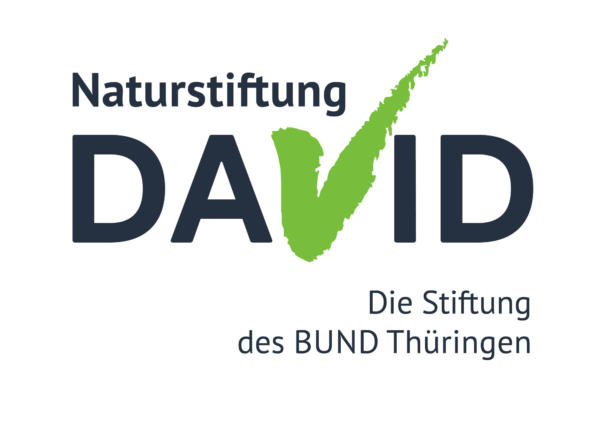 Naturstiftung David
Naturstiftung David
Erweiterung der Wildnisflächen Wiegental um 20 Hektar.
Eröffnung des Rabenswald-Familienwegs an den Wildnisbereichen des Plateaus.
Erweiterung der Wildnisflächen Wiegental um 17 Hektar.
Tor in die Waldwildnis: Eröffnung der Hängeseilbrücke im Bärental.
Spitzenwert für Thüringen: Sieben weitere Urwald-Reliktarten werden nachgewiesen. Damit steigt die Gesamtzahl auf 20.
230 Hektar mehr Wildnis im Bereich des Plateaus.
Erweiterung der Wildnisflächen Wiegental um 50 Hektar im Laufe des Jahres.
Forscher weisen vier weitere Urwald-Reliktarten in der Hohen Schrecke nach. Die Gesamtzahl steigt damit auf 13.
Bundesumweltministerin Barbara Hendricks besucht die Hohe Schrecke.
Flächen des Stadtwalds Artern (22 Hektar) erweitern den Wildnisbereich Wiegental.
Im Bärental werden 75 Hektar aus dem DDR-Volksvermögen übertragen und werden seither Wildnis.
Die Naturstiftung David kauft (unterstützt durch die ZGF) für die Ewigkeit die Nutzungsrechte für das Wiegental und die angrenzenden Waldbestände.
Der Antrag für die Umsetzungsphase wird genehmigt. Damit ist das Herzstück der Hohe-Schrecke-Wildnis dauerhaft gesichert.
Naturstiftung David stellt Antrag für Umsetzungsphase (Naturschutzgroßprojekt).
Untersuchungen zur Totholzkäfer-Fauna weisen 9 sogenannte Urwald-Reliktarten nach. Einer davon ist der Knochenglanzkäfer, der seit 1909 in Thüringen als verschollen galt.
Fledermausuntersuchungen zeigen eine enorme Arten- und Individuenvielfalt: Entdeckung einer Fledermaus-Wochenstube in einem Baum mit knapp 600 Individuen.
Start der Planungsphase für das Naturschutzgroßprojekte Hohe Schrecke. Das Projektbüro in Heldrungen-Braunsroda nimmt seine Arbeit auf.
Naturstiftung David bekommt Naturschutzgroßprojekt bewilligt.
Freistaat Thüringen sagt zu, bei einer Förderung des Naturschutzgroßprojektes 1.000 Hektar „alten Waldes“ als Wildnisfläche zur Verfügung zu stellen.
ZGF sichert Naturstiftung David Unterstützung des Naturschutzgroßprojektes zu.
Naturstiftung reicht gemeinsam mit den Anrainerkommunen eine Projektskizze für ein Naturschutzgroßprojekt Hohe Schrecke ein.
Privatperson bekommt Zuschlag für wertvolle Waldflächen in der Hohen Schrecke. ZGF hatte den BUND Thüringen bei Gegenangebot unterstützt.
250 Hektar der Hohen Schrecke in Sachsen-Anhalt gehen in das Nationale Naturerbe und werden nicht privatisiert.
Die Zoologische Gesellschaft Frankfurt unterstützen den BUND Thüringen bei einem Kaufangebot in Höhe von 1,2 Mio. Euro für Waldflächen in der Hohen Schrecke.
Ausweisung des Naturschutzgebietes Hohe Schrecke. 600 Hektar des ehemaligen Panzerschießplatzes (Pionierwald) auf dem „Plateau“ werden als Totalreservat ausgewiesen.
Abzug der Sowjetarmee vom Truppenübungsplatz Lossa.


